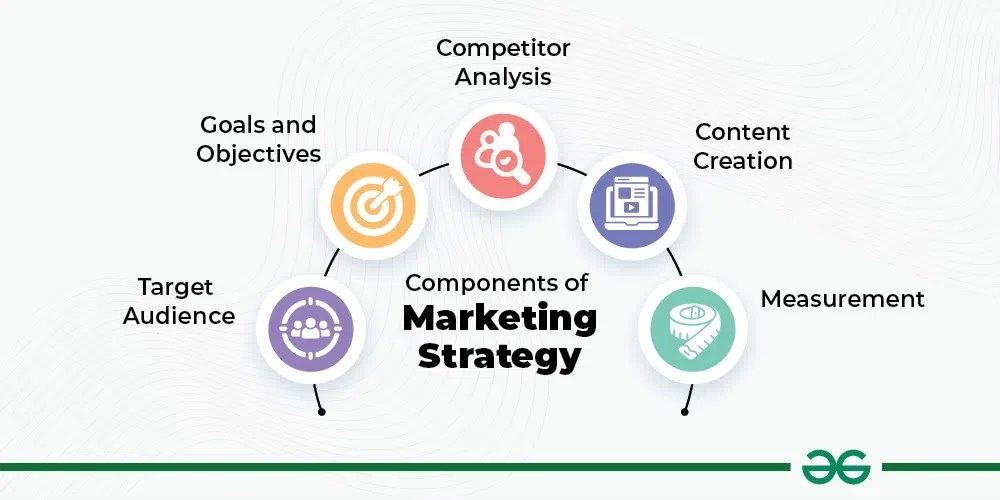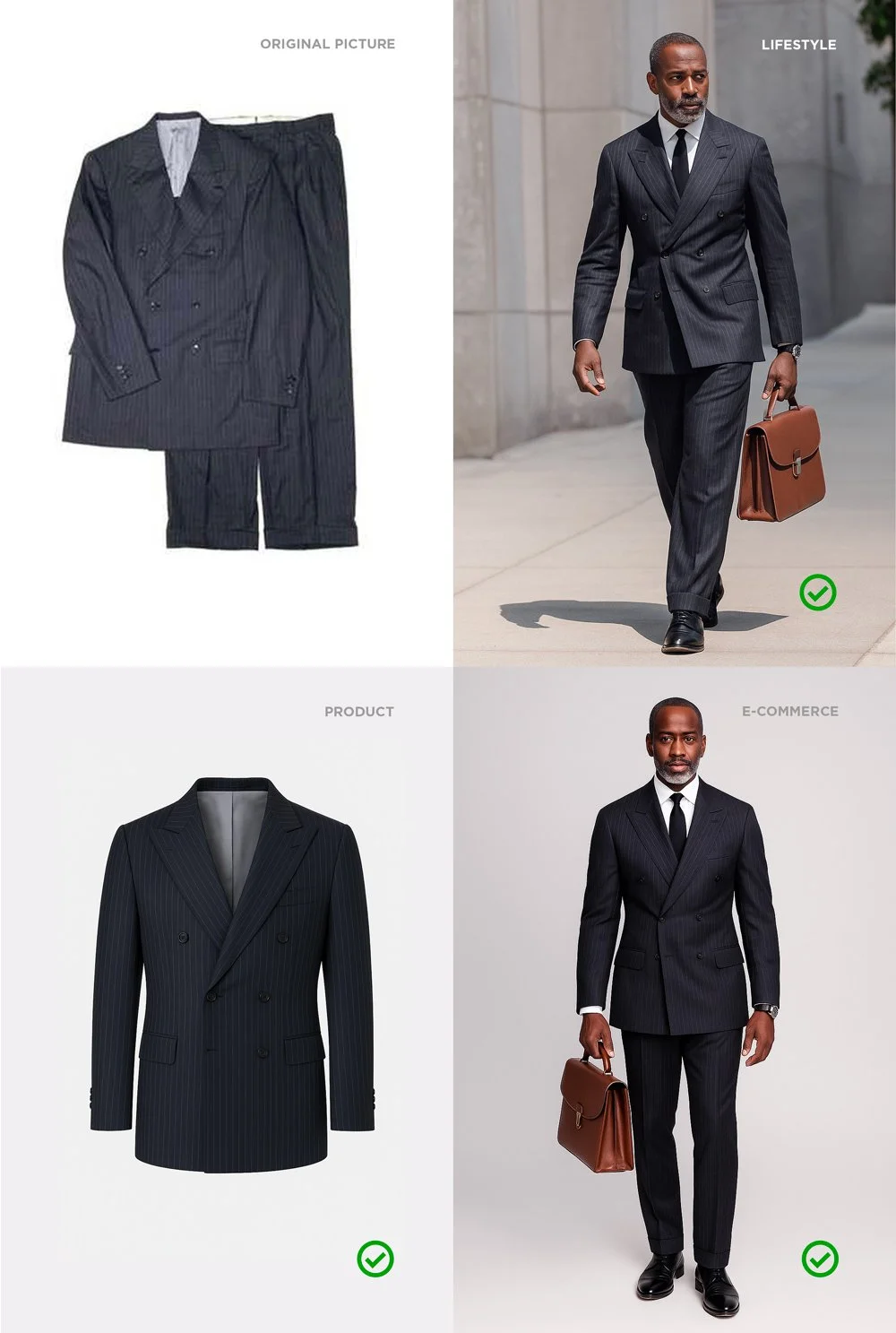How AI Supports Modern Marketing in MTM
For the past six years, I’ve been involved in every part of marketing within the made-to-measure world: graphic design, art direction, strategy, content creation, print, digital campaigns, and more. When you work in a specialized industry like ours, you naturally wear many hats. Every project, every client, and every detail influences how your brand is perceived.
AI started gaining attention around 2016. I personally began using AI tools in 2021, when they were far less advanced than what we see today. Over time, the technology improved and became more accessible, especially for marketing tasks. Even with that progress, one belief remains true.
AI will never replace a human. It does not have instinct, emotion, or creative reasoning. It doesn’t understand context the way we do. You always need someone to guide the direction, make decisions, and connect with customers through a human lens. AI supports the work, but it cannot take over the work.
When used correctly, AI can help you save time, increase consistency, and bring more structure to your marketing and your business. Let’s take a look at some key points related to marketing in the industry.
1. Strategy
Many businesses start creating content simply because AI makes it easy. The problem is that content without direction rarely leads to results. Before using any tool, you need to be clear about your objectives.
Define your goal first. Every marketing action should support that goal.
Source: geeksforgeeks
Once you understand what you want to achieve, AI can help you organize your thinking. For example, you can describe your company, your challenges, or your market to a tool like ChatGPT and ask it to help you refine ideas or explore different angles for your marketing efforts.
But AI is not a brand strategist. It doesn't understand your clients or your brand personality the way you do. A marketing professional or an agency is still the most reliable path. If you’re starting on your own, AI can still help you establish foundational structures and simplify the early stages.
A simple starting point for any business is email collection. Setting up newsletters or automated sequences already creates ongoing value without much effort.
2. Photohoots
AI-generated visuals have improved rapidly in recent years. Lighting, composition, and textures are much more advanced than before. However, not everything AI produces is usable.
Bad examples often include hands with too many fingers, unnatural fabric draping, or distorted proportions. Good examples, on the other hand, present the product clearly and maintain visual consistency. A smart way to use AI is to transform simple product images into contextual lifestyle visuals, e-commerce photoshoots, or product scenes that help clients imagine the item in real life.
In these examples, I used a photo taken with a phone and transformed it into a complete campaign. I created all the visuals using ChatGPT 5.1. Contact me if you’d like access to the prompts I used.
AI photos can serve as supporting material for social media or quick mockups. They should be used carefully, because visuals in the made-to-measure industry directly affect customer trust.
3. Socials Videos
AI video tools continue to evolve, but full videos still feel artificial. Movements can appear unnatural and expressions often lack authenticity.
Some companies, like Saviero Textile, lean into the AI style intentionally. They use exaggerated visuals and bold language to create reactions and engagement, and it works because they are transparent about it. It’s also important to remember that Saviero is a B2B brand, which makes their approach a bit different from what works in B2C.
Content from @savierotextiles
If you try to use AI for realistic videos without acknowledging it, the end result often feels disconnected.
My recommendation is simple. Be the face of your videos. Be real. Forget AI for this part. Record with your phone and edit with tools like CapCut. Clients connect with people, not synthetic characters.
4. Social Media Management
Social media plays a major role in how customers discover made-to-measure brands. It shapes their first impression long before they step into your showroom.
AI can support you by:
Planning content calendars
Suggesting themes and ideas
Drafting caption options
Creating variations of existing content
Summarizing long content for short posts
Helping you structure reels, educational posts, and announcements
AI helps you reduce preparation time, but your brand tone and experience should always come from you.
5. Copywriting
Copywriting was one of the first areas transformed by AI. While the tools can write quickly, AI-written text still has recognizable patterns. It sometimes feels repetitive, generic, or overly formal.
Was this article written by AI? Yes, but only partly. I wrote the foundation and structure, then used AI to improve clarity and strengthen SEO. That’s the right way to use it: AI helps organize, but the human keeps the voice.
If you collaborate with AI instead of relying entirely on it, the result feels more natural and intentional.
6. Communication Automation
Automation is where AI becomes truly practical. It helps you manage communication and follow-ups without spending hours on repetitive tasks.
Automation is valuable in made-to-measure because clients expect clear communication after every step of the process.
At MTM.Design, we can integrate automation directly into your workflow. This includes:
Key events to communicate
Audience updates
Order tracking updates
Order confirmations
Satisfaction surveys
Welcome emails
Additional workflows based on your needs
What can be automated:
Emails
Text messages
WhatsApp messages
This creates a smoother customer experience and helps you stay organized, even during busy periods.
If you want to automate your workflow, contact us.
7. SEO and Optimization
SEO stands for Search Engine Optimization. It is the process of improving your website so it appears higher when people search for relevant terms. SEO includes keywords, content quality, site structure, loading speed, and overall user experience.
If you want clients to find your business online, SEO is essential.
AI can support SEO by:
Generating keyword lists
Auditing your pages
Writing meta descriptions
Improving content structure
Suggesting internal links
Preparing optimized blog articles
Creating FAQ sections
AI speeds up the process, but your strategy still needs a human understanding of your audience.
8. Graphic Design
With my background in graphic design, I can generally tell when something was created using AI. Branding is far more than a logo; it’s a cohesive visual and narrative system. It covers everything from visual territory and photography to tone and storytelling, and it must reflect both your target audience and your product.
AI can be helpful in supporting areas, especially for physical items like linings, pocket squares, or limited-edition accessories. These are great spaces to explore creative variations without affecting the integrity of your main brand identity.
A good example is Distinctive Linings, a company using AI to create original lining designs for the made-to-measure industry.
They can produce custom design for your client, delivered at your factory.
Copyright and ethics matter. AI should support creativity, not replace it. The goal is to generate original ideas rather than imitate existing designs. In a close-knit industry like ours, respecting creative integrity is essential.
Conclusion: AI Helps You Scale, but Humans Create the Value
The made-to-measure industry is built on expertise, relationships, and trust. AI cannot replace that. What it can do is help you save time, improve consistency, and expand your visibility.
AI is most effective when it works alongside your brand. It supports strategy, content, automation, design, and optimization, while your experience gives direction and meaning to everything you produce.






